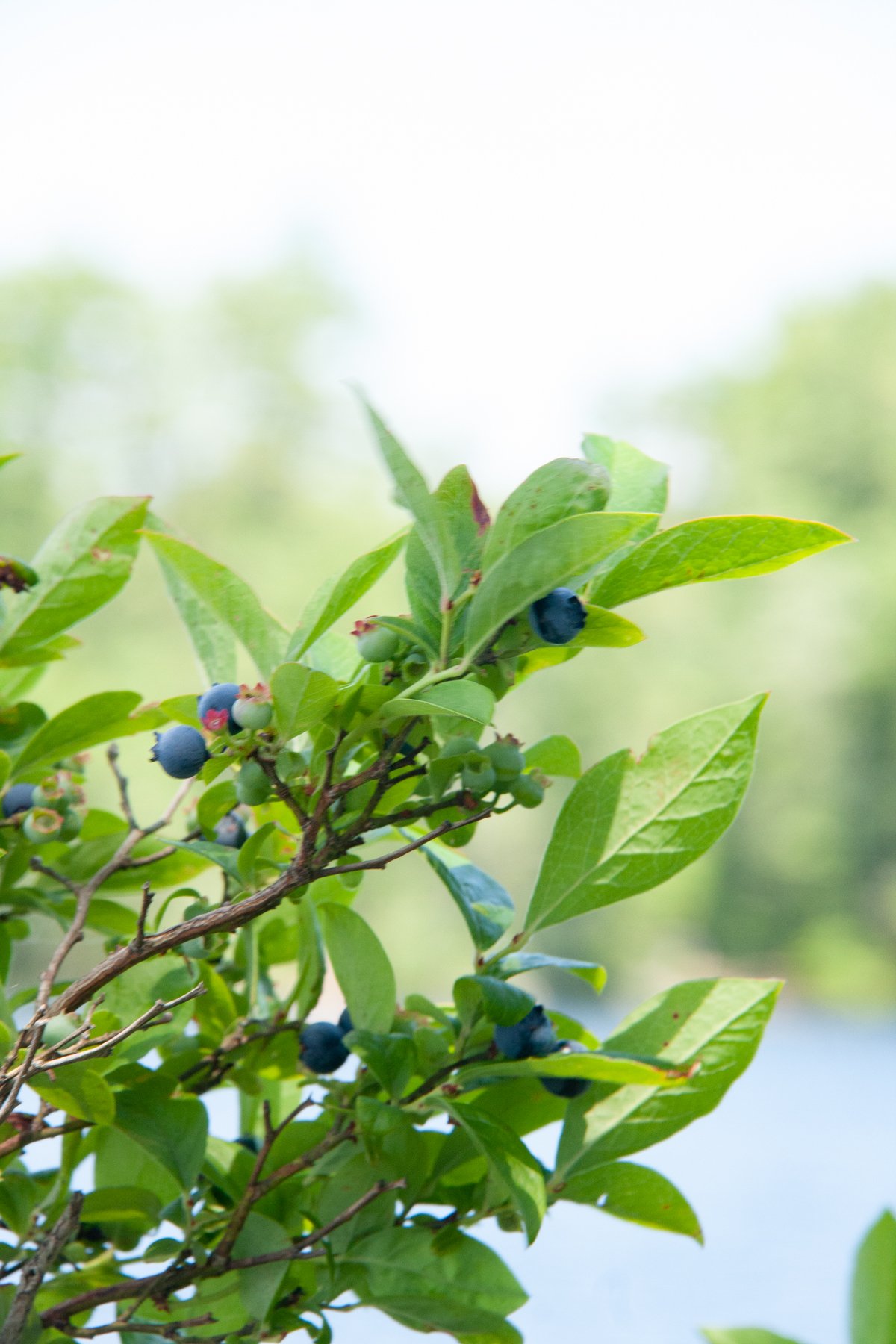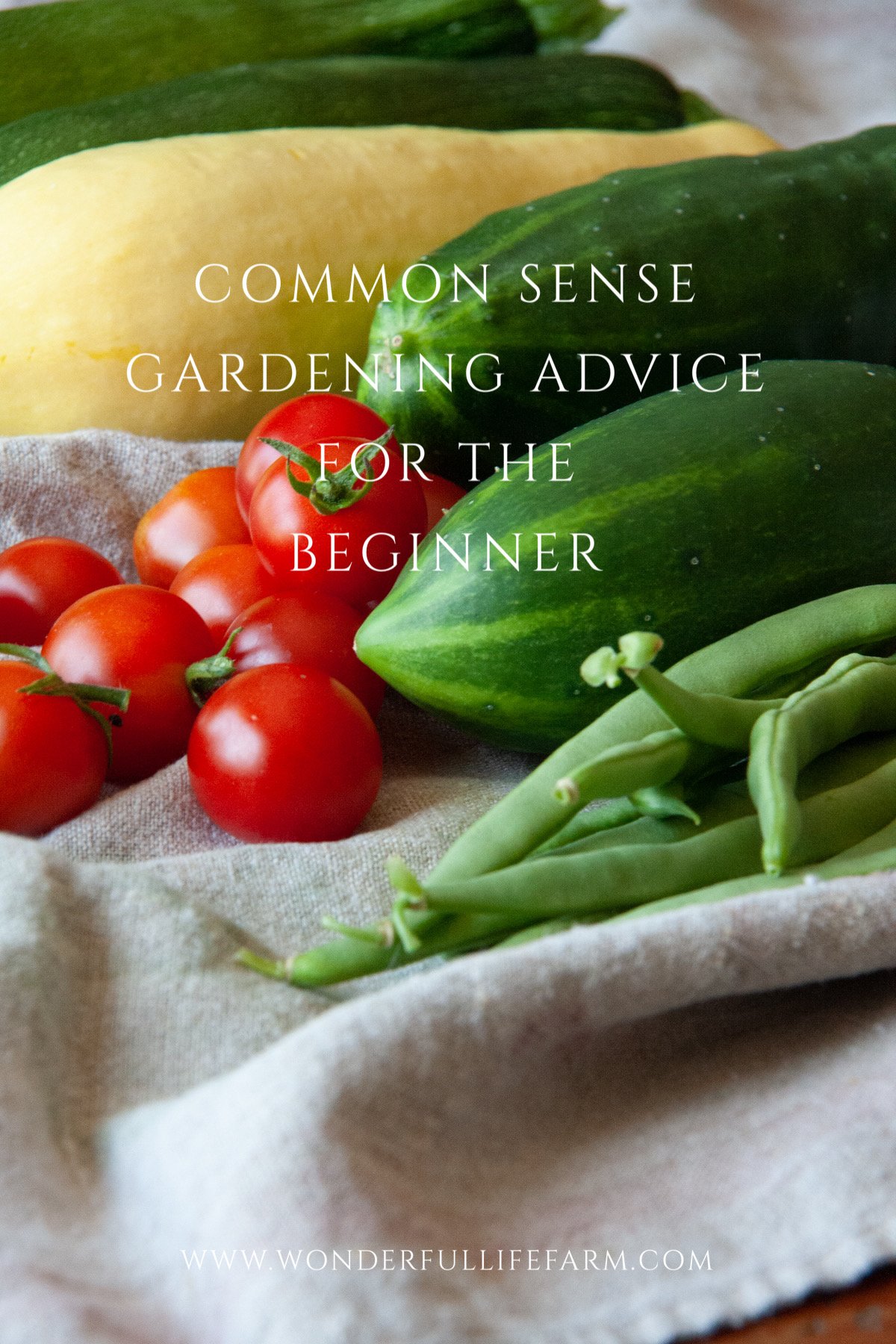Common Sense Gardening Advice for the Beginner
Gardening is a continual learning process. That is a truth. But in 28 years of gardening vegetables and flowers, I have learned a few more truths that are good, basic common sense for the beginning gardener. I have gardened in the harsh, dry conditions of southern California and in the short-season of northern New England. Those locations require different gardening processes, but some basics underpin them both. Having a firm grasp of this common sense gardening wisdom will help you to enjoy gardening more and be frustrated less.
BE REALISTIC ABOUT YOUR: TIME, ENERGY, SPACE, AND PHYSICAL ABILITIES
Before you start to plan a garden, be honest with yourself about how much time you have, your energy level, the physical space you have for a garden, and your physical abilities. If you work a full-time job and have a full social calendar on the weekends, maybe a smaller garden is right for you? If, on the other hand, you are home much of the time and want to pour yourself into gardening, then follow your dreams and dream big! How much energy do you have for the garden? How much mental and physical energy? How much space do you have? Is having a mini-farm available to you in terms of space, but doesn’t match your time or energy? Or does it? Maybe gardening in pots is your optimal (or only) solution? It’s amazing how much you can grow in pots! For those with small spaces, dream big in those pots! And finally, take into account your physical abilities. Making a problem back or arthritic knees make raised beds your best friend.
GROW WHAT YOU EAT
When you are pouring over all the tempting photographs in seed catalogs or thumbing through seed packets at the local garden center, it is easy to be carried away into gardening dreamland. Everything looks good! But the reality is that all those tempting pictures become sprouts and plants and produce. Sometimes in very large quantities. Grow what you and your family eat. Think about what you buy in the produce section of your local grocery store, and focus on growing those items. If no one in your family really loves eggplant, then growing them (no matter how fun it is to see these large, purple orbs growing in your garden), is probably not the best idea or the wisest use of your garden space.
KNOW WHAT TO DO WITH YOUR CROPS
Knowing what to do with all the fruits, vegetables, and herbs you grow will revolutionize how you garden. It is unlikely that you will simply be able to consume one gardening season’s produce with your daily meals. You will need to think about and learn how to preserve your crops in some way. Fruits can be: eaten fresh, frozen, puréed, and made into jams and jellies. Vegetables can be: eaten fresh, canned whole or chopped (be sure to know how to safely do this based on their pH level), frozen, made into soups and sauces, made into salsas. Herbs can be: used fresh for cooking, dried, frozen, made into pesto, used to flavor vinegars, mixed into butter and frozen, made into jelly.
GROW ONLY AS MUCH AS YOU NEED
Unless one of your purposes in gardening is to give away much of what you grow, it is best to stick to growing only as much as you need. One or two zucchini plants will be ample for most families (and some of your neighbors!). Tomatoes are another very prolific garden plant. One or two tomato plants is good for a summer’s worth of eating for the average family. Grow more if you have time, energy, space, and desire to make soups, sauces, and salsas to freeze.
PLAN YOUR GARDEN
Before our garden ever looks like the photo above, it takes shape on graph paper (preferably on a snowy day in January). Know your garden area’s measurement and create a to-scale rendition of it on graph paper. This enables you to know how much space you have for the plants you desire to grow. This helps to avoid growing (from seed) or purchasing too many plants for your space. It helps you know if you have more space than you thought. And it helps with plant spacing too. My hand-drawn garden plan will go out to the garden on the day we till and stake out the beds for the season. It is a joy to see my sketch come to life!
START SEEDS OR BUY PLANTS
You can either start your plants from seed, or buy “starts” (small plants already started for you) at the local nursery. I do both. Seeds can be started indoors and then transplanted outside. This is definitely a process worth learning! You can search for advice on YouTube on how to do this, or take a class from a local nursery. Some seeds can be directly sown into the soil. And sometimes, it’s just easier (although never cheaper) to buy starts. You’re a real gardener no matter how you do it, so pick the option that works best for your time and energy level.
BE HONEST WITH YOURSELF ABOUT HOW MUCH YOU LIKE WEEDING
If I am brutally honest with myself, weeding kills all of the joy of gardening for me. I have zero desire to spend my summer pulling weeds when I could be reading a book in the hammock or spending the day at the lake. I do not like weeds. If you don’t like pulling weeds either, then figure out a good method of mulching your garden and kiss wedding goodbye. We cover our garden in black plastic sheeting just after it has been tilled and leveled. Then we stake out the beds according to the year’s plan (the stakes help to hold the plastic down; but we also use metal landscape staples from the local home improvement store). I cut a hole in the plastic just big enough to slip a plant into and mulch the whole area with treated straw. The straw has been treated so that it won’t sprout. The combination of the straw and plastic helps to create a warm and moist environment that plants love and that is considered organic. Win for them! Big win for me!
BE HONEST WITH YOURSELF ABOUT HOW MUCH YOU LIKE WATERING
If you live in a hot, dry climate, you may spend much of your summer watering your garden. (Here, in New England, we have received so much rain some summers that I can count on one hand the number of times I’ve actually had to water the garden in that season.) If you are not a fan of watering, then install a good, drip irrigation system (maybe even on a timer) to give your garden the water it requires and free up your time to be spent elsewhere.
IF FLOWERS BRING YOU JOY, GROW THEM
If you are passionate about flowers and would like to fill your home with lovely blooms, then plan to plant some flowers too. They can join the fruits and vegetables in the kitchen garden, or have designated beds of their own. Flowers have more individual needs than vegetables and herbs, so be sure to study up on how best to grow what you love. And do grow what you love, if your climate is conducive to that flower. Some of the easiest and most rewarding to grow are: hydrangeas (plant them once and they will love you forever), dahlias (a world unto their own; easy to grow, but don’t come up year after year), cosmos (super easy), and sunflowers.
I hope you’ve found some useful tips, filled with common sense, that will set you on the right path to creating beautiful garden memories!









